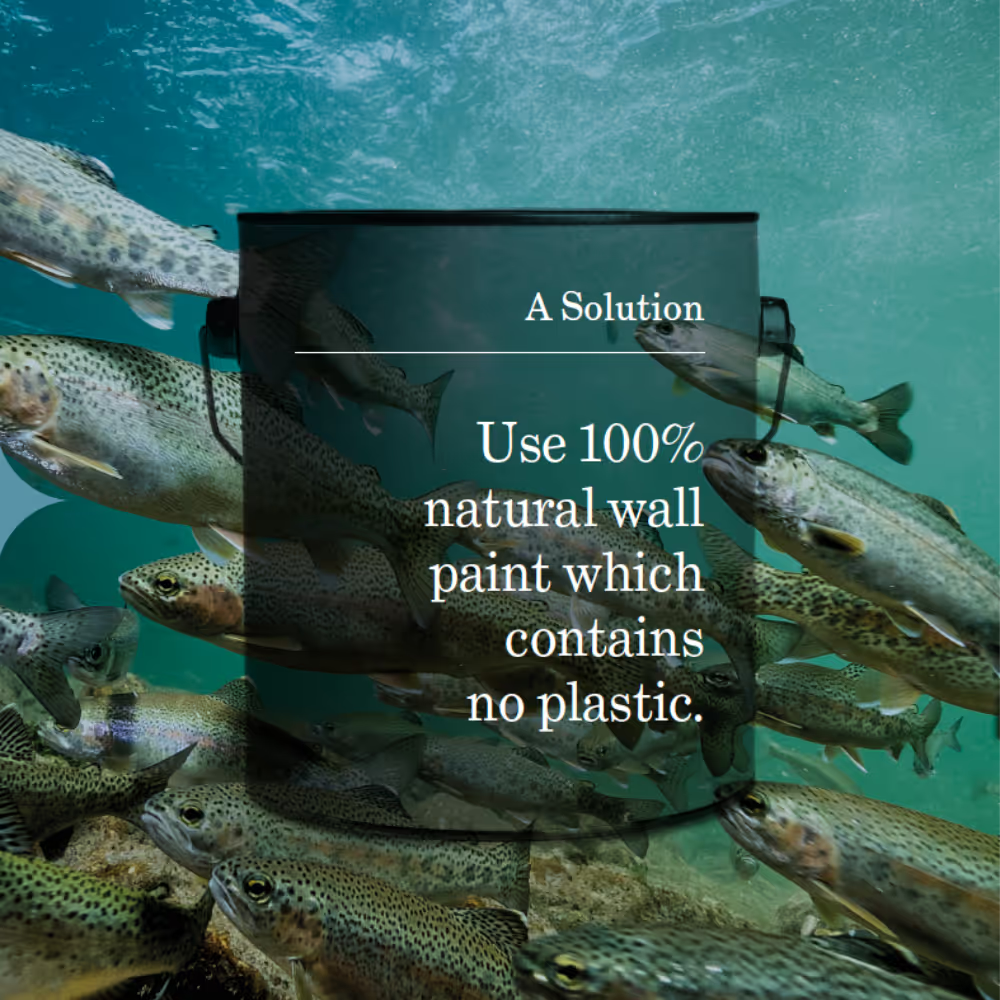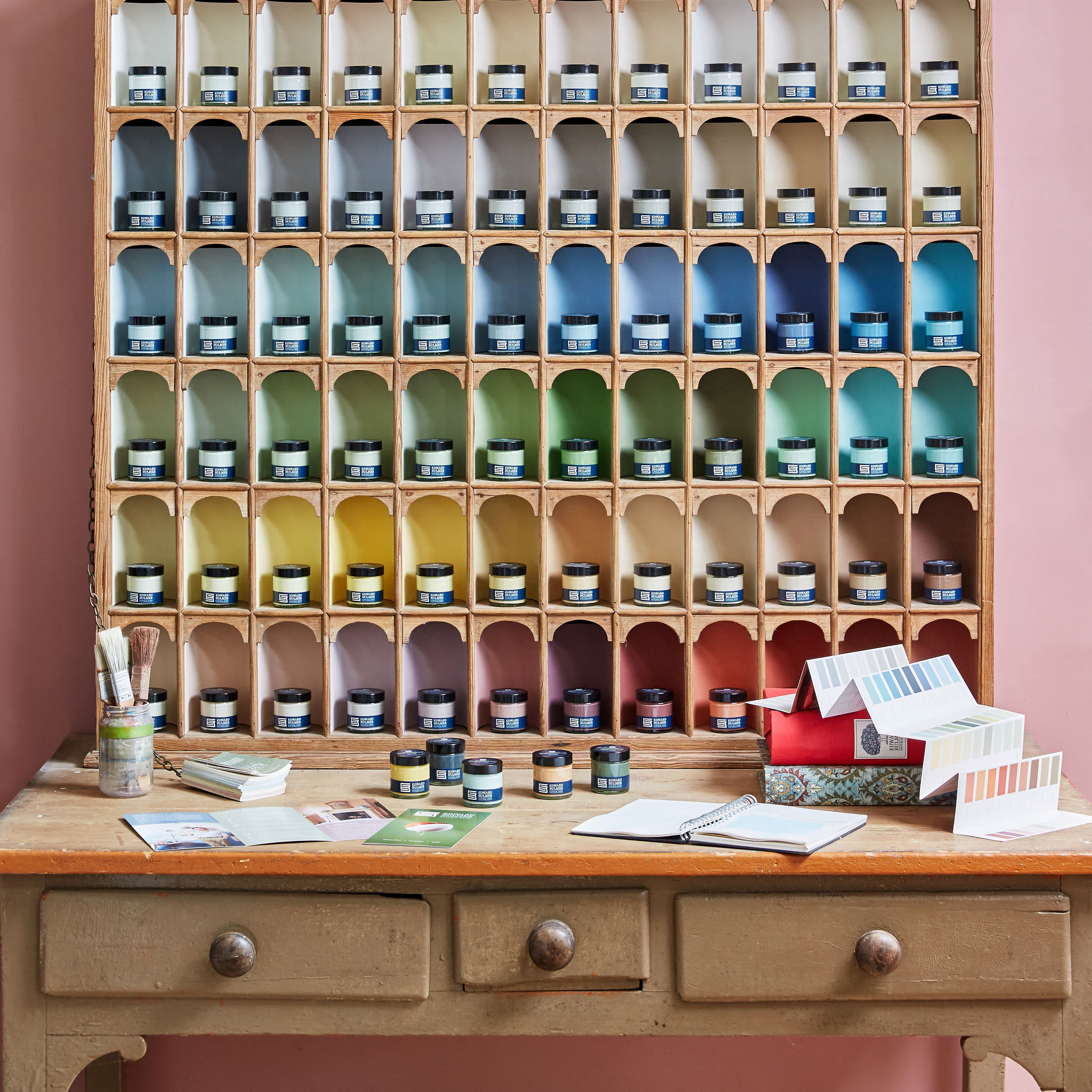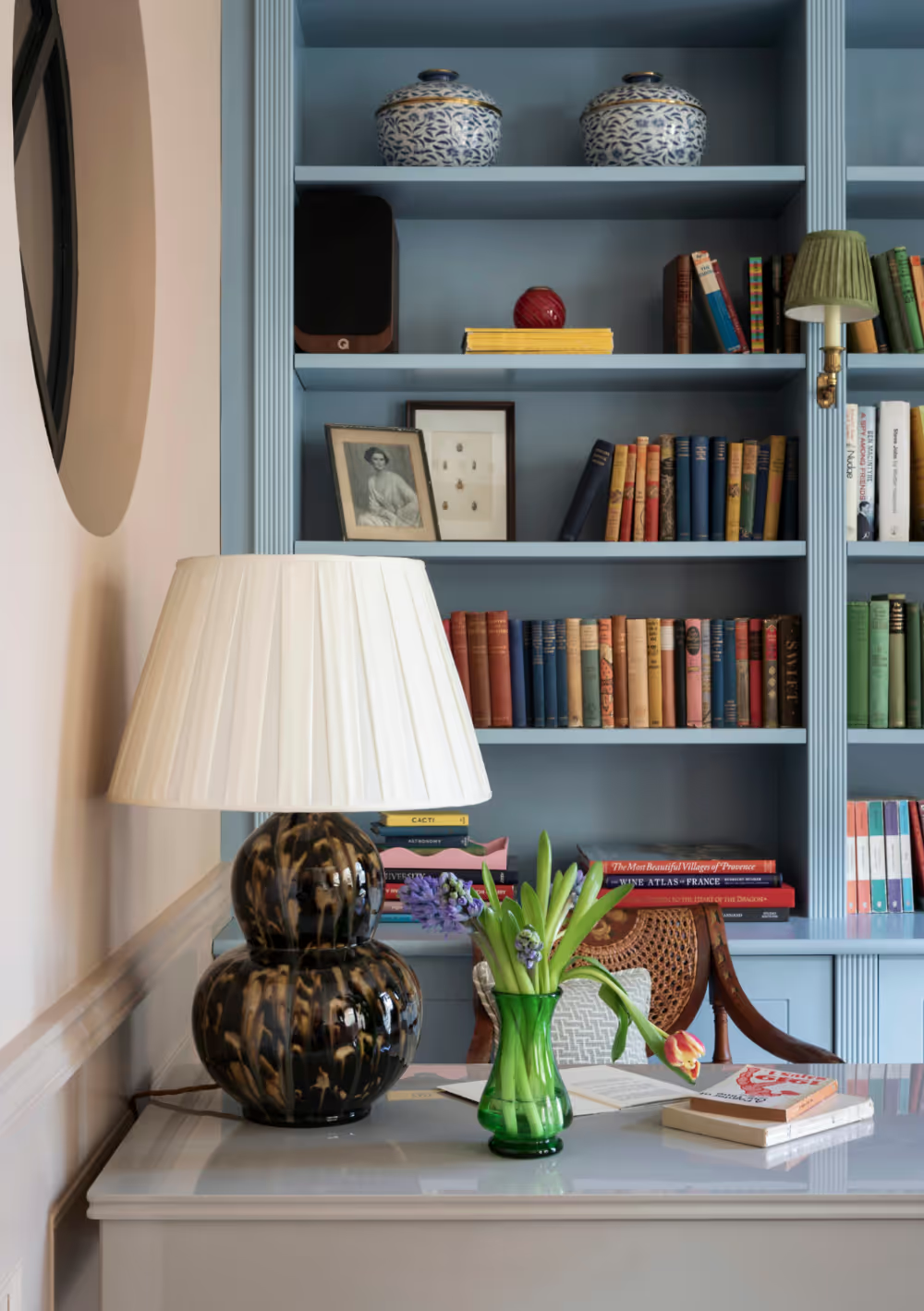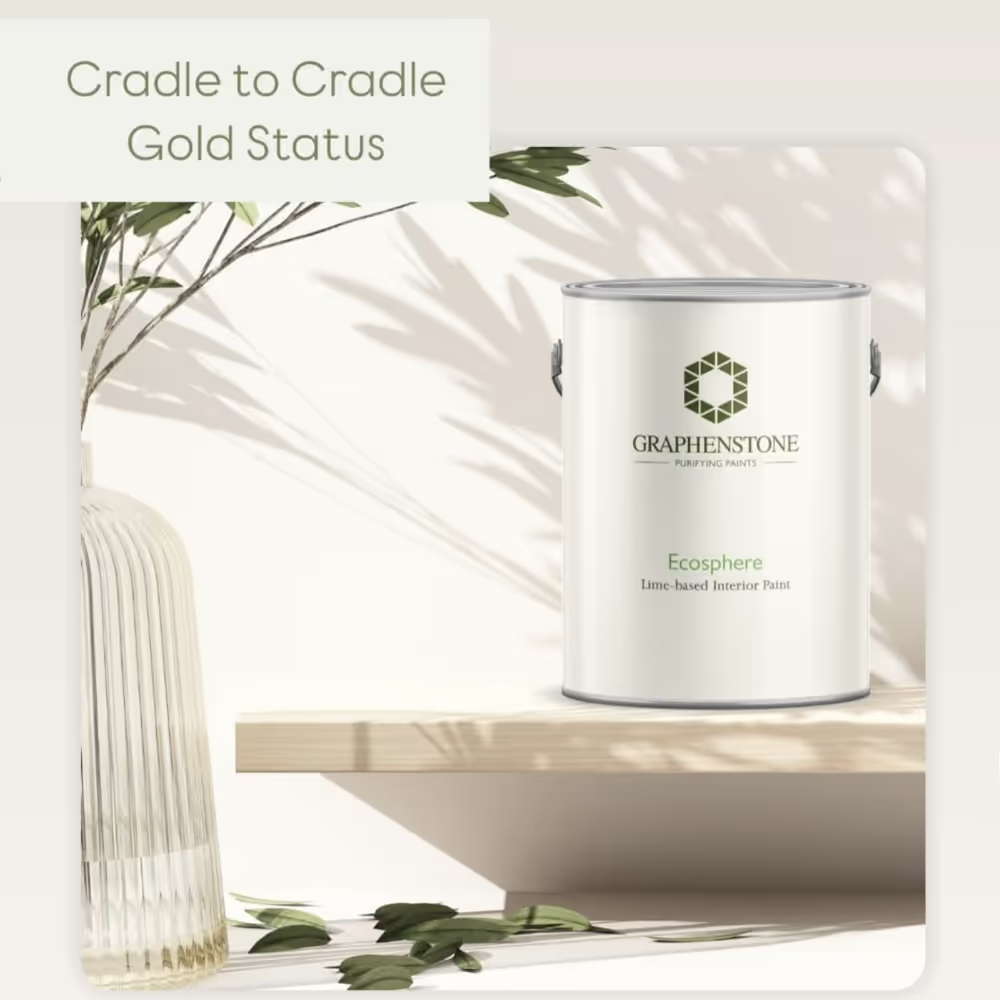When you’re planning a little home makeover, grabbing a tin of DIY paint feels like a harmless and innocent choice. After all, if the label says “water-based” or “low VOC”, it must be safe… right?
Unfortunately, the reality is very different.
Not even the 'Elephant's Breath' brand that commonly appears in interior design magazines is truly eco-friendly. Yes it's water based. Yes it's low VOC. But it contains plastic which is derived from fossil fuels. This is wrong when there are better ways to make paint.
Touted as being environmentally friendly and safe for homeowners, water-based paints often come with hidden environmental and health costs that most of us never stop to think about.

CREDIT: Kampus Production
You simply cannot walk into a typical DIY store or high-street decorator shop and buy a paint that does not contain plastic.
Just because a paint is water-based, it does not mean it is environmentally friendly, nor ok health-wise.
Most modern paints – even the ones that claim to be eco-friendly – contain synthetic binders made from plastics like acrylic, vinyl, or polyurethane.
These plastics are derived from fossil fuels, meaning the paint industry is tied directly to the oil industry.
Paint manufacturers are not required by to list the ingredients on the tin. But surely if those ingredients were safe, they would want to highlight this?
The paint you buy can really impact the indoor air quality of your home. You might have heard of VOCs (volatile organic compounds).
VOCs are present to improve the way paint adheres to a surface, to shorten the drying time, and to help keep your walls looking fresh.
However, paints ‘off-gas’ long after the paint has been applied. These invisible fumes can linger for weeks or months after painting, reducing indoor air quality and contributing to health issues such as headaches, allergies, asthma, or more serious long-term effects.
Even when a paint is labelled 'low VOC', it doesn’t mean it’s free from off-gassing.

CREDIT: Michelangelo Buonarroti

CREDIT: Kalpit Visavadiya
The production and disposal of conventional paints also place a heavy burden on the planet.
From the fossil fuels used in manufacturing to the toxic waste that results when paints are thrown away, the environmental cost is far greater than the price tag on the tin.
Paint doesn’t just stay neatly on your walls. Over time, it chips, peels, and breaks down into microplastics that wash into our drains or leach into soil.
When we strip paint off woodwork whilst redecorating, it goes to landfill.
The plastic contained in paint cannot dissolve — it breaks down into tiny fragments, called microbeads or microplastics.
So, when you rinse paint brushes or tip leftover wet paint down the sink, those microplastics go straight into wastewater. Treatment plants can’t fully filter them out, so they end up in rivers and seas.
Not only does this harm sealife but fish ingest the microplastics which end up in the human food chain.
Edward Bulmer Natural Paint's website goes into great detail about the environmental and health effects of non-natural paints.

CREDIT: Edward Bulmer Natural Paint

CREDIT: Pixabay
Fossil fuels are driving climate change, and the paint industry is part of the problem.
Climate change is already reshaping the natural world, and no species – including us – is untouched. To protect people, nature, and the planet, we must act now to keep global warming below 1.5 degrees.
The paint industry is tied closely to oil, but there is a better way forward.
By switching from plastic-based paint to plant-based alternatives, we can all play a part in breaking that cycle.
It’s time for change.
The good news is that we don’t have to accept this as the norm.
Natural paints, made with plant-based binders and mineral pigments, are a growing alternative to what's dominating the mainstream market.
They don’t rely on fossil fuels, they avoid the plastic problem, and they’re kinder both to your indoor air and to the planet.
Choosing these paints means you can enjoy a beautiful home without compromising your health or the environment.

CREDIT: Edward Bulmer Natural Paint

CREDIT: Edward Bulmer Natural Paint
My two go-to brands are Edward Bulmer Natural Paint and Graphenstone.
They are both leading the way in natural paints, offering an alternative that is free from petrochemicals.
Both offer richly nuanced colours and their paints are designed to let walls and woodwork 'breathe' as they don’t form a plastic, impermeable film
Edward Bulmer paints use natural earth and mineral pigments for depth that many say synthetic paints struggle to replicate.
Edward Bulmer emphasises plant-based raw materials and natural production.
Plus they are transparent about their ingredients and list them on the tin!
Graphenstone harnesses lime and graphene technology, making their paints carbon-absorbing as they cure. That means your walls can actually help lock away CO₂ rather than contribute to it.
Both companies offer richly nuanced colours in a wide palette, with finishes suitable for walls & ceilings, woodwork & metal, interior and exterior.

CREDIT: Graphenstone

CREDIT: Edward Bulmer Natural Paint
Next time you’re planning a DIY project, think beyond the colour chart. The paint you choose is more than just decoration — it has lasting consequences for your health and the natural world. By making the switch to plant-based paints, you’re taking a small but meaningful step towards a healthier home for you and your family, and a cleaner planet too.